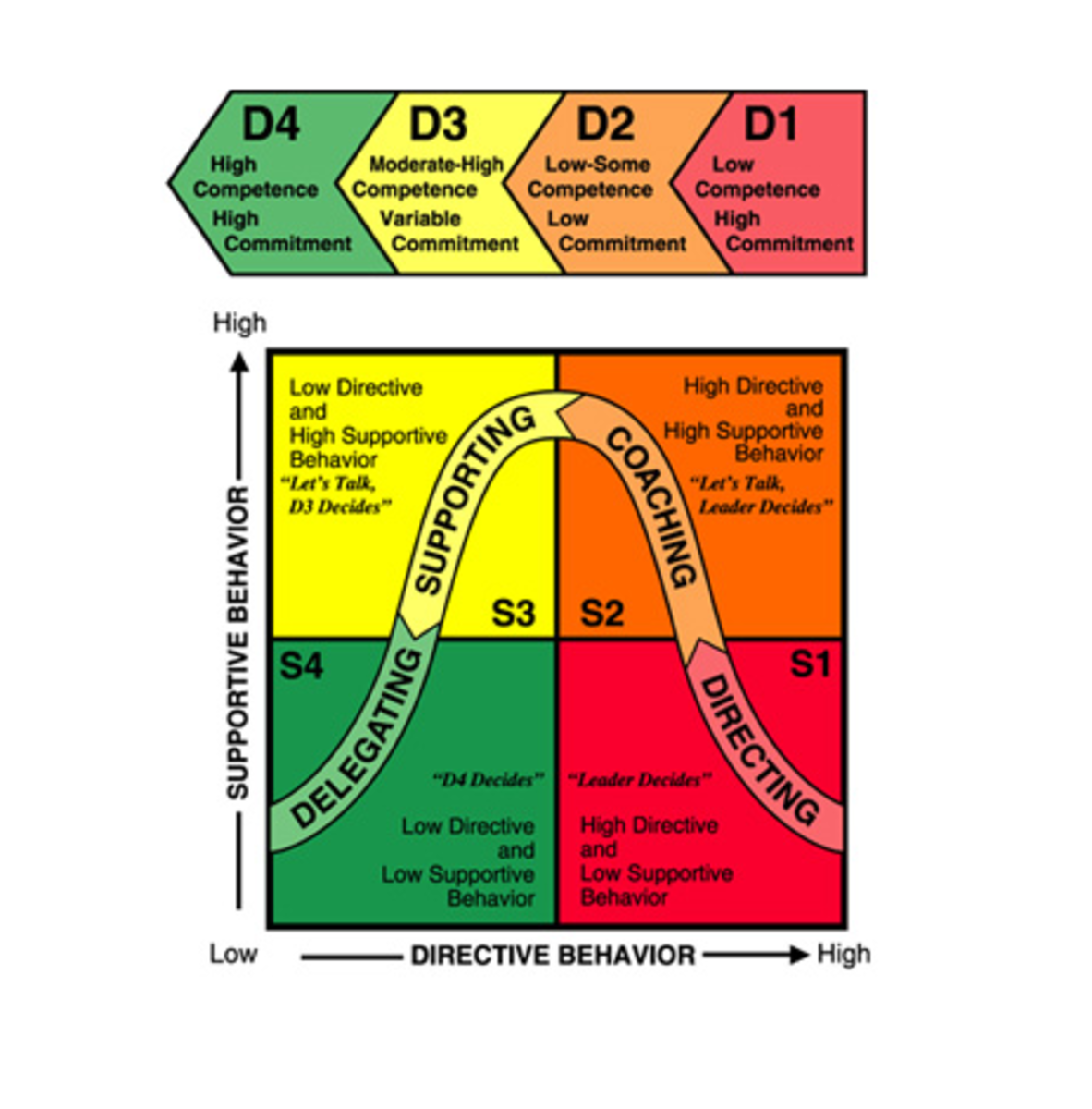PERSONNEL MANAGEMENT - QUESTIONS AND ANSWERS
What is personnel management? Cite its functions and features.
Personnel Management is a part of management concerned with people at work and their relations within a firm. The main functions of the personnel manager usually include staff recruitment, training, and welfare. The term personnel management is somewhat misleading in that it is usually line managers who manage the work force, while personnel managers provide a mainly supportive and advisory service.
Personnel management is the planning, organizing, directing and controlling of the procurement, development, compensation, integration, maintenance and separation of human resources to the end that individual, organizational and societal objectives are accomplished.
There are at least four main functions in general management, which are listed as follows:
Planning, Organizing, Directing, Controlling.
While, there are at least six functions in operative management, which are listed as follows:
Procurement, Development, Compensation, Integration, Maintenance and Separation.
Supervisors and managers are responsible in the management of human resources. On a larger organization higher management may provide special staff to assist, advise, serve, counsel and facilitate the work of supervisors. They are also concerned with the promotion and enhancement of the development of work effectiveness and advancement.
Explain the different approaches of personnel management.
There are several approaches of personnel management, but only three that catches my interest most. These are Systems approach, Scientific Management and Paternalistic Approach.
Systems approach traits the organization as one intricate system; that each unit in the organization is dependent on each other. It assumes that personnel management is a part and parcel of the larger organizational systems for the simultaneous fulfillment of both the needs of individuals, groups of individuals, managers and the total organization.
Scientific Management employs the product of cumulative learning and experimentation conducted in the past; and it will continually observed and adopt to changes on the modern ways on the discovered techniques of personnel management that will affect the success of an organization. It is also known as the economic model. It uses the mechanical approach in dealing with people with the assumption that “there is always one best way of doing things.” The disadvantage, on the other hand is, it treats man like a machine.
Paternalistic approach traits all personnel in the organization as one big family. The moment an employee has been employed he must act as part of the family and that a standard care and benefit given to each personnel is due mainly for mutual protection of the whole organization. When given the proper motivation and recognition, man will give his best.
But on my personal point of view the approaches to personnel management are just a guide. The approaches to personnel management may be adopted by an organization in an integrated way. What is more important is what actually suits the organization to achieve its goal.
What do you mean by procurement of personnel? Explain.
Procurement of personnel is the hiring of people who will come on board, or move into the new job, and deliver outstanding performance in the organization or the company. The managers are duty-bound to attract and choose the right people, develop their skills and motivate them. The growth of the company or the efficiency of an organization does not derive alone from the use of modern technology. What makes the difference is the ability of the company or organization to attract people who are highly skilled and highly dependable employees.
4. What are the employment policies and practices?
Employment policies and practices are designed to protect the agency and or the company and the employees. These are: The right of the organization to select employees on the basis of qualifications; The responsibility of the organization to prove validity and job relatedness of selection devices that have adverse impact on protected group; and The responsibility of the organization to use alternative methods of selection with less adverse impact when feasible.
On the other hand, the moment that an employee is carefully chosen and finally hired, he will have all the rights and benefits set by the law. Employees are one of the most valuable assets in the organization but they should be not be treated as adjunct machines. They are to be treated with dignity and respect.
An interesting job can give us happiness and make us feel useful and wanted. Hardly anyone wants to lose a job, no matter how little he may enjoy it. Besides guaranteeing a wage, paid employment gives structure, purpose, and a sense of identity to one’s life. These are some of the ideals that must be in the employment policies and practices.
How is recruitment, selection and appointment of employees in your agency being undertaken? Cite concrete example.
Recruitment, selection and appointment of employees in company I am working with is done with simplicity and does not follow rigid standard. This is because the private institution I am working with is classified as SME (Small & Medium Enterprise).
I am currently employed as a Finance Officer and Programmer/Analyst in Linorma’s Finance Corporation and its sister company, the Linorma’s Agrotrade. Based on the company policy, hiring and appointment of employees are done on a very simple way but intelligently. Extensive interview by the manager is one of the main process. Evaluation of resume’ and background investigation of the applicant is also conducted.
The company also conducts a yearly performance appraisal to all the employees.
What is performance appraisal? What are the objectives of an employee performance rating system?
Performance appraisal is the process of assessing and evaluating each employees in their performance of their duties. This is crucial because staffs are one of the most costly investment in the company or the organization. It is very important that employers are aware of what their employees are achieving for the company as individuals.
It is necessary that employer must know how well the employees are doing their jobs. It is also important that the managers must know how to improve his employees’ performance.
In conducting performance appraisal, it involves interviewing the employees individually, each year, to discuss aspects of their work such as: what they do well; where their weaknesses are; what needs improvement; how this can be achieved; and where their future development lies. Hence, a performance rating systems must be necessary.
Performance rating system must have general and specific objectives. The ultimate aim of the performance rating system is to improve the effectiveness and profitability of the company or efficiency of the bureaucracy. Through a performance rating system the managers can focus on an individual’s efforts within the company or the organization, relative to the overall objectives of the organization or the company. Mutually, the company does not only benefited but also the employees as well.
For instance, employees may be given recognition for jobs well done. They may have a chance to discuss problems with the top executives and may suggest how to solve them. Employees could be able to explore how job satisfaction can be increased. They may have opportunity to plan future development of the job. They may be able to plan future training with the employer. And finally, performance rating system makes the employee know where they stand.
On the part of the executives or the employer, some of the objectives they may wish to achieve are as follows: Review goals set for the previous year; Set goals for the current year; Motivate the employees and assess their abilities; Improve relationships with the employees; Improve communication with the employees; Reduce employee turnover; Provide a chance to solve problems relating to job performance. And finally, provide an opportunity to identify promotable employees.
How is career development implemented in your agency?
Being employed in the private company I am being benefited in the career development program of our company. Yearly, our company sends us (employees) to relevant seminars and trainings relative to our job functions. Our company encourages us to pursue higher learning, hence we are encourage to take postgraduate studies. On a regular basis, we are also send to seminars about technology updates such as the Microsoft seminars and other computer-related trainings, and of course, all expenses and representation are shouldered by the company.
Some of the trainings and seminars we were sent with are as follows: “Corporate Governance” conducted by Securities and Exchange Commission; “How to make a fortune as Lending Investors” conducted by Asian Institute of Management; “Problem Accounts: Its detection and prevention.” Conducted by Asian Institute of Management; MSDN and Techfest, seminar on networking and internet, conducted by Microsoft Philippines. These are some of the partial list our company had sent us in order for us to acquire constant growth in career development.
How does communication play a vital role in an organization?
Communication determines the success or failure of an organization. More often than not, those managers who are lacking the skills of good communication are classified as low achievers, while those who are trained on good communication skills achieved the best results. The following is an statistics to prove how vital communication is in an organization.
A Texas research organization studied 16,000 executives to determine which type of leadership got the best results from workers. It discovered that executives who achieved the best results tended to care about people as well as profits. Those who achieved average results concentrated on production. Those who achieved the least were “obsessed with their own security.” The high achievers listened to both workers and superiors, while the low achievers tended to avoid communication, relying on policy manuals instead. Researchers concluded that high achievers are not born, but are made. The key is training young executives to have proper views toward work and workers.
The personnel manager must have the proper art of expression. This is the vital aspect of a good communication. One of the characteristics of the pleasing and winning personality, especially for the managers, is that of easy and effective expression. By expression is meant the representation of his thoughts, particularly by means of speech.
Every person in the organization should endeavor to acquire the art of expressing clearly and effectively his ideas, so that other persons may comprehend them easily and with as little undue effort as possible.
Many managers and many people owe their advancement, their position, largely to their ability to talk well. Making a good appearance, a favorable first impression, is everything, and no one can do this so well as a good, charming talker.
“There is a frustrating of plans where there is no confidential talk, but in the multitude of counselors there is accomplishment.” said by one of the wisest man that ever lived. That is why communication is crucial.
What is R.A. 7877? Cite its salient features and explain.
This is the law that protects employees against sexual harassment.
The law prohibits sex discrimination by an employer with respect to compensation, terms, conditions, or privileges of employment. The law, has help define what constitutes unlawful sexual harassment. According to this law, unwelcome sexual advances, requests for sexual favors, and verbal or physical sexual conduct constitute unlawful sexual harassment under any of three conditions: (1) submission to the conduct is either implicitly or explicitly made a term or condition of employment; (2) submission to or rejection of such conduct is used as a basis for employment decisions; or (3) the conduct has the purpose or effect of unreasonably interfering with an individual’s work performance or creating an intimidating, hostile, or offensive working environment. The key element that makes the sexual behavior unlawful in each case is that it is unwanted by the recipient. For example, sexual jokes and flirting may be acceptable in the workplace under some circumstances; however, if these behaviors are unwelcome, they may constitute sexual harassment.
What are the standard procedural requirements in sexual harassment case pursuant to Resolution No. 01-0940? What are the remedies after a decision has been pro
Civil Service Resolution No. 01-0940 is an Administrative Disciplinary rules on Sexual Harassment Cases. It sets an standard procedural requirements such as the proper form of complaint and action on the complaint. Furthermore, it sets also the procedures on the following:
Preliminary investigation
Duration of investigation
Investigation report
Decision or Resolution after preliminary investigation
Provisions for appeal and motion for reconsideration
Finality of Decision
Section 12 of this resolution states the proper form of complaint. It sets that a complaint may be file at anytime with the disciplining authority of the office or agency or with the Committee on Decorum and Investigation. In the absence of a Committee on Decorum and Investigation, the head of the office or agency shall immediately cause the creation of a Committee on Decorum and Investigation in accordance with the law and rules. The complaint must be in writing, signed and sworn to by the complainant. It shall contain the fullname and address of the complainant; the full name, address, and position of the respondent; a brief statement of the relevant facts; evidence, in support of the complaint, if any; and a certification of non-forum shopping.
When a decision is adverse to a party and he/she feels that an error in judgment has been done, the remedy is to file a motion for reconsideration within the period of 15-days from receipt of the decision. If the motion for reconsideration has been denied, he still have another remedy and that is to file a petition for review to the higher court that has the proper jurisdiction, and within the period of 15-days upon receipt of the denial of the motion for reconsideration. He must be careful in filing an appeal so that all necessary evidence to support his claim must be properly attached and cited upon.
Feel free to read these thought-provoking and compelling hubs:
How to Win in Office Conflicts
How to Pass the Civil Service Examination in the Philippines
How to Pass the Board Licensure Examination
How to Pass the Licensure Examination for Teachers
How to Maintain Professional Growth and Development
How to Improve the Power of Your Creativity
How to Achieve Competence in a Workplace Meeting and Discussion, part 1
How to Inculcate Serious and Responsible Attitudes Towards Works, part 1
How to Retain Talent and Motivate Employees
How Will Your Personality Affect Your Success in Business
How to Avoid Verbal Attacks, Intrigues and Slugs in Workplace or in Office
Implementing Management Change: Leading and following
What Make Employee Valuable to Employer
What the Employer Look for an Applicant
Why Filipino Workers are World Class Workforce
Why is it necessary to standardize rules and adopt performance programs
Ways and Tips to Win in an Argument
Handling Front Office Situations in Hotel Management
PERSONNEL MANAGEMENT – Questions and Answers
THE WORK VALUES OF FILIPINO WORKERS
The Importance of Leadership and How to be a Good Leader
The Mix and Match Rules in Clothing
The Secret of a Quality Workmanship
TMTP - TRAINERS METHODOLOGY TRAINING PROGRAM OF TESDA - PART 1
A Session Plan for Teaching Skills on How to Participate in a Workplace Communication
ENHANCE ABILITY TO ENJOY AND THRIVE IN WORK








